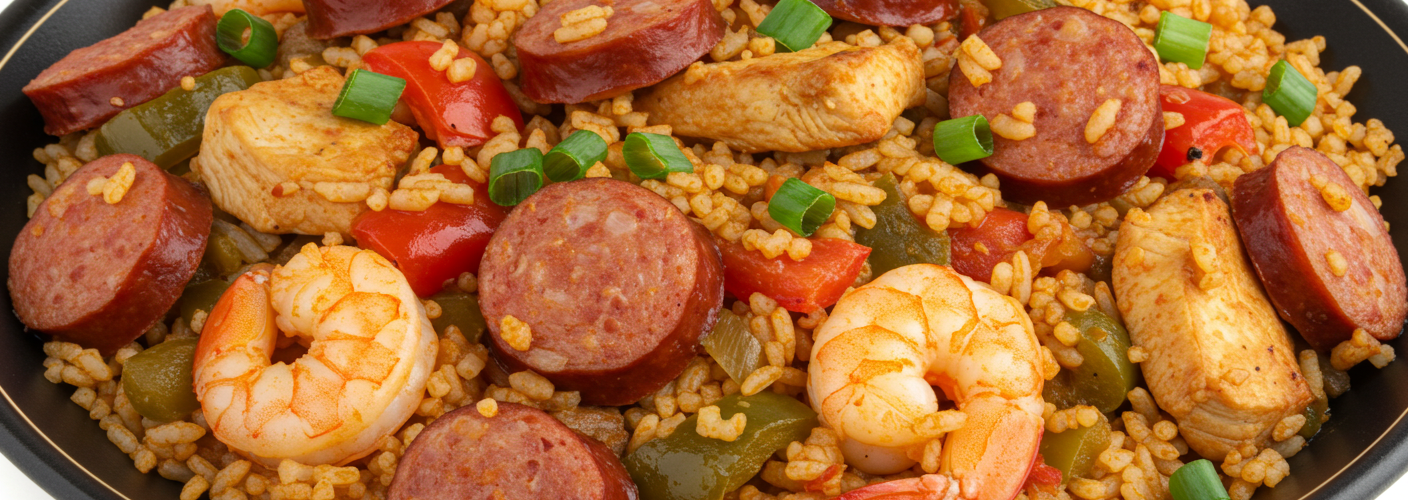Louisiana Jambalaya is not just a meal; it’s a vibrant celebration of the rich culinary traditions of the South. This one-pot dish, which finds its roots in Creole and Cajun culture, is a hearty blend of meat, vegetables, and rice, expertly infused with a spectrum of spices that evoke the spirit of the bayou. Its origins reflect the diverse influences that shape Louisiana’s unique cultural tapestry, making it a beloved staple in homes and restaurants alike.
At the heart of jambalaya is its versatile protein selection, which typically starts with a smoked sausage—most commonly andouille. This spicy, robust sausage delivers a depth of flavor that forms the backbone of the dish. The inclusion of pork or chicken further enhances the meatiness of the jambalaya, providing a satisfying, savory experience with each bite.
While traditionally heavier on meats, jambalaya can also incorporate seafood, elevating it to another level of indulgence. Shrimp and crawfish are popular additions, contributing a subtle sweetness that pairs beautifully with the smoky, spicy notes from the sausage. The combination of these proteins not only offers a picturesque presentation but also allows for a delightful symphony of flavors that those who enjoy good food will appreciate.
The vegetable component of jambalaya is equally crucial to its character. Bell peppers, onions, and celery—often referred to as the “holy trinity” of Cajun cooking—form the foundational base. These vegetables are sautéed until tender and fragrant, creating an aromatic profile that sets the stage for the rest of the ingredients. Additional spices such as garlic, thyme, and bay leaves weave their way into the mix, contributing complexity and depth to the dish.
Rice is the unfaltering canvas upon which the dish is built. Long-grain rice is most commonly used, as it absorbs the flavors from the meats and spices while retaining its individual texture. The rice cooks in a rich, seasoned broth, soaking up every bit of the savory goodness, ensuring that each serving is packed with flavor.
While there are countless variations of jambalaya, they broadly fall into two categories: Creole and Cajun. Creole jambalaya, often referred to as “red jambalaya,” incorporates tomatoes, giving it a distinctive coloration and additional acidity. In contrast, Cajun jambalaya typically forgoes the tomatoes, focusing instead on the smoky, spicy elements and the robust flavors of the meat. Regardless of which version you choose, both promise a deliciously comforting experience.
As you consider preparing this iconic dish, remember that jambalaya also represents the spirit of togetherness. It’s often served during gatherings, festivals, and family reunions, where everyone can partake in the communal joy of feasting and celebrating. The timeless nature of jambalaya ensures that it continues to be passed down through generations, evolving while still retaining its cherished roots.
In conclusion, Louisiana jambalaya is more than just a dish; it’s a flavorful journey through the heart of Louisiana culture. Its vibrant flavors, diverse ingredients, and communal spirit invite everyone to experience the deep, rich culinary history of the South. Whether enjoyed at a family gathering or a local restaurant, jambalaya is a delicious reminder of the power of good food to bring people together. So, gather your friends and family, and savor every spoonful of this quintessential Louisiana dish!




Add comment